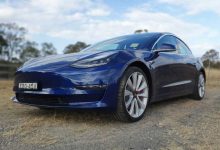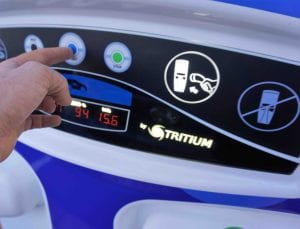The Australian Energy Market Operator is looking at the role of rooftop solar, and how that can be used to help solve some of the grid issues that could be raised by the rapid uptake of electric vehices.
Early modelling by AEMO has noted that much, but certainly not all, of the charging for EVs – be they residential, commercial or heavy industrial fleets — coincides with the output of solar PV.
This could be used to fill in some of the demand hollowed out by the growing “duck curve” – just like electric water heating used to fill in low demand gaps at night for coal fired generators that didn’t want to turn off. And it’s topical, given the negative prices occurring in Queensland and elsewhere due to the increase in solar capacity.
This is important. Some time over the next decade or two, the purchase of EVs will overtake that of internal combustion engines, and the amount of charging from the grid will grow exponentially. Signs are that the EV market is growing rapidly, and interest in purchases is increasingly rapidly.
No one is really quite sure when this exponential growth will happen – it will depend on government policy, consumer preferences, and the roll-out of interesting products, but AEMO knows it needs to be prepared, not just to manage the growing demand, but also taking advantages of the opportunities.
Grid operators around the world are looking at how they can manage the anticipated influx of EVs. Like AEMO, their fear is that un-managed charging will add significantly to demand peaks. But, managed appropriately, they can actually be turned into an asset – soaking up supply at certain times, and feeding back into the grid and acting as a major source of storage at others.
Many grid operators – because their countries are further down the track of EV adoption than Australia – have already gone into some detail. The UK’s National Grid, for instance, recently released its Future Energy Scenarios that highlighted the key role that electric vehicles will need to play in a zero-carbon grid, particularly in integrating renewables.
“The charging of over 35 million electric vehicles will provide flexibility and integrate a higher level of renewable generation on the system,” it says. “This amplifies the positive impact of electric vehicles on decarbonisation.”
AEMO is not so far down the track, thanks to the slow uptake of EVs in Australia to date. But Greg Staib, the head of consumer forecasting and analytics at AEMO, told the Electric Vehicle Transition conference co-hosted by RenewEconomy and its EV-offshoot The Driven last week that EVs – their uptake and how they are charged – are now a key part of short and long term planning.
Already, AEMO has looked at the link between charging patterns and solar output. This example above gives a possible forecast out to 2039 for NSW. The graph on the left highlights truck driving in the early morning after overnight trips (orange).
In both graphs, residential charging – the dominant feature – has a peak in the evening. Part of the challenge will be to design tariffs and/or incentives to smooth this over or to shift the charging to soak up excess solar in the day, or excess wind in the evening.
This next chart (below) shows what an average day could look like with “applied” or managed charging – smoothing out the “duck curve” created by solar in the middle of the day. This will be crucial in how AEMO manages the grid with an increasing amount of variable sources and various forms of storage.
Indeed, Staib introduced his presentation with a juicy anecdote of what a day of extreme peaks might look like some 20 years in the future, when shared and autonomous vehicles are a thing and – as some futurists have suggested – owned and orchestrated by third party fleet owners.
In that situation, Staib suggests, and if the tariffs are providing the incentive, those fleet owners might be keeping their fleets plugged in to cope with summer peaks. It might be mighty hard to find a shared autonomous vehicle at that point.
Indeed, Staib introduced his presentation with a juicy anecdote of what a day of extreme peaks might look like some 20 years in the future, when shared and autonomous vehicles are a thing and – as some futurists have suggested – owned and orchestrated by third party fleet owners.
In that situation, Staib suggests, and if the tariffs are providing the incentive, those fleet owners might be keeping their fleets plugged in to cope with summer peaks. It might be mighty hard to find a shared autonomous vehicle at that point.
In that situation, Staib suggests, and if the tariffs are providing the incentive, those fleet owners might be keeping their fleets plugged in to cope with summer peaks.
It might be mighty hard to find a shared autonomous vehicle at that point.AEMO wasn’t the only one noticing the link, and the opportunities, between EV charging and solar. Or taking advantage of the hollowed out prices from wind energy in the night-time hours.
 Essential Energy has noticed a correlation between the timing of fast-chargers on their network, and with the output of rooftop solar.
Essential Energy has noticed a correlation between the timing of fast-chargers on their network, and with the output of rooftop solar.
Its head of strategy and innovation Joshua Harvey told the conference that DC fast-charging was done mostly in daylight hours, and that co-incided with solar production. “DC fast-charging is useful as a solar soak,” he said. And that will only intensify as the uptake of EVs grows.
“There is a definite correlation between DC fast-charging and solar PV. We see a natural synergy there if you stepped back and designed the system.”
AGL’s Kristian Handberg, the company’s electric vehicle lead (yes, that’s an official job title) also saw the opportunity of the solar soak.
He said the company is looking at the best way of managed charging, and how to encourage it to occur in ways that avoid problems in the grid (although it should be noted the company’s current incentives for EV owners allow them to charge at any time).
“We’d like to try to get the load curve to be soaked up by solar at day, and maybe wind at night,” Handberg told the conference. “This is possible to do.”
 Handberg shared these graphs as possible ways to think about it, and how different incentives could push charging sessions into different times of the day, and what would happen if they didn’t.
Handberg shared these graphs as possible ways to think about it, and how different incentives could push charging sessions into different times of the day, and what would happen if they didn’t.
Staib noted that the energy sector is clearly changing, and that includes renewables, storage, and electric vehicle charging – so electricity and transport.
In its most recent Electricity Statement of Opportunities, AEMO – on the advice of the CSIRO – has actually downgraded its forecasts for EV uptake in the coming 10-20 years.
That might disappoint the futurists and the optimists, but Staib says CSIRO justified it on a different assessment of consumer patterns. The conference heard a great deal about that. Without a coherent national policy, Australia lacks some of the key drivers to make the transition to EVs easy.
Still, AEMO is keen to work with other groups to outline the roadmap for the future, and what everyone should be thinking about in terms of infrastructure, tariffs and managing demand. This will be broken down not just to national trends, but localised issues that identify where EVs may be taken up first, and see if this creates any problems.
“AEMO are not traffic experts, so we are looking to get advice and collaboration from other participants, such as fleet owners. We want to understand what the future looks like, the worst case scenarios for peak charging, how to avoid EVs driving up demand, and how to encourage off-peak charging.
For more stories from the EV Transition Conference, please go here on our EV-focused wiser site, The Driven.












